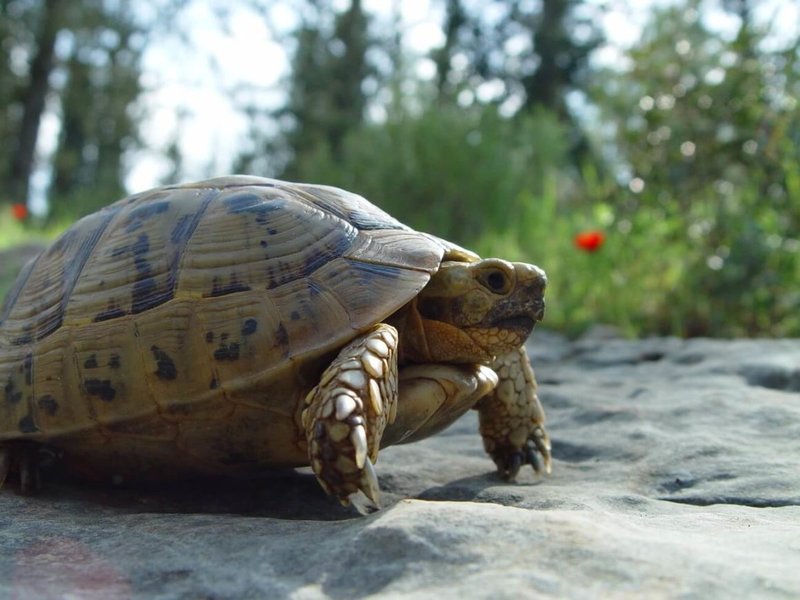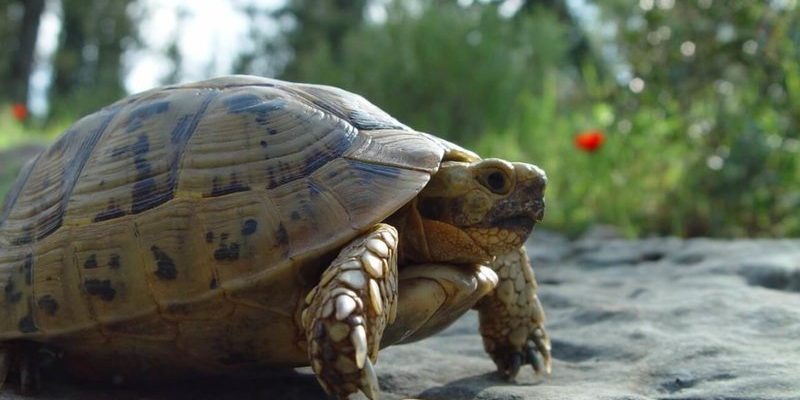
Let’s dive in and explore what it takes for Greek tortoises to live happily, whether inside your cozy home or outside in your yard. We’ll cover their needs, preferences, and how to create the best environment for them. By the end, you’ll have a clear picture of what’s right for your shelled companion.
Understanding the Greek Tortoise
The Greek tortoise, or *Testudo graeca*, is a small to medium-sized tortoise known for its distinctively patterned shell and friendly demeanor. These tortoises are native to Mediterranean regions, which means they’re used to warm, sunny climates. In fact, they soak up the sun just like we enjoy a sunny day at the beach!
Greek tortoises are herbivores, which means their diet consists mainly of plants. They thrive on a mix of grasses, leafy greens, and even some fruits. If you’re thinking about bringing one into your home, it’s essential to understand their behavior and needs. They can live for decades, so getting it right from the start is crucial.
Here’s the thing: Greek tortoises don’t like to be confined. If they spend too much time in a small space, they can become stressed or unhealthy. Whether you decide to keep them indoors or outdoors, giving them space to roam and explore is key to their happiness.
Indoor Living for Greek Tortoises
If you’re considering keeping a Greek tortoise indoors, there are several things to keep in mind. First, you’ll need to create a suitable habitat. A large enclosure is essential, as these tortoises love to wander around. A space that’s at least 4 feet by 2 feet is a good starting point, but bigger is always better!
The enclosure should include a heat source, like a basking lamp, to mimic their natural environment. Tortoises need a warm spot to soak up some rays and have a cooler area to retreat to. You can use a heat lamp during the day and keep the enclosure warm at night, especially in colder months.
Also, consider adding natural elements to their space. Think about incorporating soil, grass, and a few hiding spots. Rocks or logs can also give your tortoise a place to climb and explore. The key to a happy indoor tortoise is to make their living space feel as natural as possible.
Outdoor Living for Greek Tortoises
On the flip side, keeping your Greek tortoise outdoors can be incredibly rewarding. They love to dig, explore, and munch on fresh grass and weeds. An outdoor enclosure provides them with the chance to soak up sunlight, which is vital for their health.
When setting up an outdoor habitat, make sure it’s secure. Tortoises can be escape artists, so a well-fenced area is a must. You can build a small pen in your yard with plenty of room for them to roam. They’ll appreciate the chance to forage and enjoy the fresh air.
However, consider the climate. If you live in an area that gets really cold or harsh winters, your tortoise might need to come inside during those months. It’s important to monitor local weather conditions and be prepared to provide a warmer environment if necessary.
Key Differences Between Indoor and Outdoor Living
Choosing between indoor and outdoor living for your Greek tortoise involves weighing their needs against your lifestyle. Here are a few key differences to consider:
- Space: Indoors, you have limited space, while outdoors offers room to roam.
- Natural Light: Outdoor tortoises get plenty of sunlight, crucial for their health.
- Diet: An outdoor tortoise can forage for fresh food, while indoor tortoises rely on what you provide.
- Safety: Indoor habitats can provide protection against predators, while outdoor enclosures need to be secured.
Ultimately, it’s about what works best for you and your tortoise. Some owners do a bit of both—letting their tortoises enjoy the outdoors when the weather is nice and bringing them inside for safety during colder months.
What You Need for Indoor Tortoise Care
If you opt for indoor living, you’ll need to gather a few essentials to create the perfect home for your Greek tortoise. Here’s a simple checklist:
1. A spacious enclosure: Aim for one that’s at least 4 feet long.
2. Proper lighting: Use UVB bulbs to help them synthesize vitamin D3, which is important for shell health.
3. Heating elements: A basking lamp to create warm spots and a consistent temperature.
4. Substrate: Use soil, coconut coir, or tortoise-specific bedding to mimic their natural environment.
5. Food and water: Offer a variety of leafy greens and make sure they have access to fresh water.
Honestly, once you have the basics set up, you’ll find that indoor tortoise care can be straightforward and rewarding. Watching your tortoise explore its space can be a delightful experience!
What You Need for Outdoor Tortoise Care
Setting up an outdoor area for your Greek tortoise is a unique opportunity to connect them with nature. Here’s what you need to create a safe and stimulating environment:
1. A secure enclosure: Make sure it’s escape-proof, using sturdy materials to build a pen.
2. Natural elements: Incorporate grass, bushes, and small plants that are safe for tortoises to nibble on.
3. Shelter: Provide a shaded area or a hiding spot to help them cool down when needed.
4. Water access: Ensure they can drink fresh water and create a shallow dish where they can soak if they choose.
5. Regular supervision: Keep an eye on them when they’re outside to protect against predators and ensure they’re safe.
You might even consider planting a little tortoise garden filled with their favorite snacks! It can be a fun way to incorporate some natural foraging into their day.
Final Thoughts
So, can the Greek tortoise live indoors or outdoors? The answer is yes to both, but it really depends on your living situation and what suits your tortoise best. Whether you choose to keep them inside or let them bask in the sun outside, the most important thing is to create a safe, welcoming environment.
With the right setup, your Greek tortoise can thrive, bringing a slice of the Mediterranean right into your home or backyard. Pay attention to their needs, and you’ll forge a bond with your little friend that lasts for years to come. Enjoy the journey of caring for these amazing creatures!

